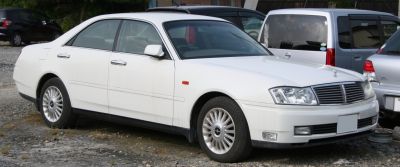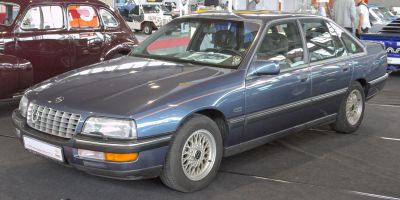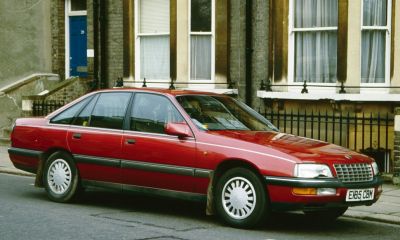 1959 Mercedes-Benz Fintail (W111) Dimensions, Size & Specs
1959 Mercedes-Benz Fintail (W111) Dimensions, Size & SpecsMeasurements of the 1959 Mercedes-Benz Fintail, engineered for optimal performance and comfort
| Dimensions | |
|---|---|
| Length: | 4875 mm191.9 in16.0 ft |
| Width: | 1795 mm70.7 in5.9 ft |
| Height: | 1500-1510 mm59.1-59.4 in4.9-5.0 ft |
| Weight Specifications | |
| Curb Weight: | 1320-1360 kg2910-2998 lbs |
| Maximal permitted Weight: | 1835-1875 kg4045-4134 lbs |
The Mercedes-Benz Fintail, known by its chassis code W111, was produced from 1959 to 1968 and represents a classic era of Mercedes sedans. This generation of the Fintail series is renowned for its distinctive rear styling, which featured sharply defined tail fins, a design trend popular in the late 1950s. The W111 Fintail was primarily available as a sedan, boasting elegant styling and pioneering safety features for its time.
Dimension-wise, the Fintail W111 measures 4875 millimeters (approximately 192 inches) in length, which placed it solidly within the mid to large-size sedan segment of its day. Its width is 1795 millimeters (about 70.7 inches), offering a spacious cabin while maintaining a relatively slender profile compared to modern sedans. The height ranges between 1500 to 1510 millimeters (approximately 59 to 59.4 inches), contributing to a balanced and stately stance on the road.
When it comes to weight, the curb weight of the Mercedes-Benz Fintail ranges from 1320 to 1360 kilograms (2910 to 2998 pounds), depending on the specific model and options. The vehicle’s maximum weight is between 1835 and 1875 kilograms (4047 to 4134 pounds), reflecting its robust build and additional load capacity. These weights underscore the solid construction typical for luxury cars of that era, emphasizing durability and ride comfort.
Overall, the Mercedes-Benz W111 Fintail sedan is a perfect example of classic German automotive engineering, combining elegant dimensions, characteristic fins, and solid weight engineering. This generation remains popular among collectors and enthusiasts for its design, comfort, and historical significance within Mercedes-Benz’s lineup. Its size and weight offered a comfortable and commanding presence, ensuring it remains a noteworthy classic car when compared to other sedans from the late 1950s and 1960s.
Discover the standout features that make the 1959 Mercedes-Benz Fintail a leader in its class
Have a question? Please check our knowledgebase first.
The Mercedes-Benz Fintail (W111) sedan from 1959 to 1968 has a length of 4875 mm (191.9 inches), a width of 1795 mm (70.7 inches), and a height ranging from 1500 to 1510 mm (59.1 to 59.4 inches). These dimensions position the Fintail as a relatively large mid-century luxury sedan, reflecting its emphasis on spaciousness and road presence. The width provides comfortable interior space for passengers, while the height contributes to a classic profile typical of luxury sedans of its era.
The Mercedes-Benz Fintail (W111) weighs between 1320 kg to 1360 kg (2910 to 2998 lbs) in curb weight, which is the weight of the vehicle without passengers or cargo but with necessary operating consumables like fuel and oil. The maximum weight, which includes the vehicle fully loaded with passengers and cargo, ranges from 1835 kg to 1875 kg (4047 to 4134 lbs). The weight reflects the sturdy construction typical of Mercedes-Benz sedans of the period and influences driving dynamics such as stability and ride comfort.
With a height ranging between 1500 mm and 1510 mm (59.1 to 59.4 inches), the Mercedes-Benz Fintail (W111) is moderately tall for sedans of the late 1950s and 1960s. This height allowed for comfortable headroom and a stately cabin feel, which was important for the premium segment it targeted. Compared to some contemporaries, which often ranged between 1400 mm to 1500 mm (55 to 59 inches), the Fintail’s height contributed to its elegant presence without making it significantly bulky or imposing.
The Mercedes-Benz Fintail (W111), with a length of 4875 mm (191.9 inches) and a width of 1795 mm (70.7 inches), generally fits comfortably within a modern standard garage. Typical single-car garages tend to have a length of about 5500 mm to 6000 mm (216 to 236 inches) and a width of about 3000 mm (118 inches), so the Fintail leaves adequate room to open doors and maneuver inside. However, the full width and height should be considered if parking side-by-side with other vehicles or in smaller garages, particularly in older European homes where garage dimensions may be tighter.
At 1795 mm (70.7 inches) in width, the Mercedes-Benz Fintail (W111) was slightly wider than many European sedans of its production period (1959-1968). This extra width allowed for a more spacious interior cabin, improving passenger comfort especially in terms of shoulder room. Typical sedans from the late 1950s and 60s often ranged from about 1650 mm to 1750 mm (65 to 69 inches) wide, making the Fintail stand out by offering a broader profile that contributed to its luxury status and road presence.
The curb weight of the Mercedes-Benz Fintail (W111), ranging from 1320 to 1360 kg (2910 to 2998 lbs), contributes to a solid and stable driving experience typical of classic Mercedes-Benz luxury sedans. Heavier weight generally improves ride comfort and road holding by damping vibrations and enhancing momentum, but it can also lead to increased fuel consumption compared to lighter vehicles. For the Fintail, this weight strikes a balance between structural integrity and reasonably efficient performance for its era, offering drivers a comfortable yet competent driving experience.
Compared to its predecessor, the Mercedes-Benz 'Ponton' series (such as the W120 and W121 produced in the 1950s), the W111 Fintail is generally larger and heavier. The Fintail’s length of 4875 mm (191.9 inches) surpasses the typical length of Ponton models, which ranged around 4600-4700 mm (181-185 inches). The width of 1795 mm (70.7 inches) in the Fintail is also greater, reflecting a shift toward more spacious luxury sedans. Weight increased accordingly from roughly 1200-1300 kg (2645-2866 lbs) in the Ponton to up to 1360 kg (2998 lbs) in the Fintail, indicative of added features, safety enhancements, and more robust construction.
In comparison to other luxury sedans of the late 1950s and 1960s, such as the BMW 502, Jaguar Mark 2, and Cadillac Series 62, the Mercedes-Benz Fintail (W111) is competitive in size. Its length of 4875 mm (191.9 inches) is similar to the Jaguar Mark 2 (around 4680 mm or 184 inches) but shorter than many American luxury sedans like the Cadillac, which often exceeded 5200 mm (204 inches). The width of 1795 mm (70.7 inches) is wider than many European rivals but narrower than American luxury models. With its balanced dimensions, the Fintail occupies a niche between European compactness and American spaciousness, appealing to buyers seeking classic luxury with good maneuverability.
The Mercedes-Benz Fintail (W111), as a large sedan, comfortably seats five passengers with two front bucket seats and a spacious rear bench seat. The vehicle’s design emphasizes passenger comfort with generous headroom and legroom supported by its overall dimensions. Luggage space is adequate for a vehicle of its time, with a reasonably sized trunk accessible from the rear, suitable for typical family travel and luggage needs. While exact trunk capacity figures vary, the car was designed as a luxury transport rather than a cargo hauler, prioritizing refined passenger accommodation over extensive storage.
The Mercedes-Benz Fintail (W111) is famously recognized for its distinctive rear fin styling, which earned it the nickname 'Fintail.' Introduced in 1959, this feature served not only aesthetic purposes but also improved directional stability. Mechanically, the W111 was advanced for its time, offering innovations like optional air suspension and improved safety features including crumple zones and a reinforced passenger cell, pioneering developments in automotive safety. The car was powered by a range of inline six-cylinder engines, known for smoothness and reliability. Its combination of elegant design, innovative technology, and solid engineering made it a flagship model for Mercedes-Benz during the 1960s.
Discover similar sized cars.

| Production: | 1999-2004 |
|---|---|
| Model Year: | 1999 |
| Length: | 4865 mm191.5 in |
| Width: | 1770 mm69.7 in |
| Height: | 1440-1465 mm56.7-57.7 in |

| Production: | 1995-1999 |
|---|---|
| Model Year: | 1995 |
| Length: | 4780-4860 mm188.2-191.3 in |
| Width: | 1720-1745 mm67.7-68.7 in |
| Height: | 1410-1425 mm55.5-56.1 in |

| Production: | 1999-2004 |
|---|---|
| Model Year: | 1999 |
| Length: | 4865 mm191.5 in |
| Width: | 1770 mm69.7 in |
| Height: | 1450-1465 mm57.1-57.7 in |

| Production: | 1987-1993 |
|---|---|
| Model Year: | 1987 |
| Length: | 4845 mm190.7 in |
| Width: | 1743-1763 mm68.6-69.4 in |
| Height: | 1452 mm57.2 in |

| Production: | 1997-2001 |
|---|---|
| Model Year: | 1998 |
| Length: | 4886 mm192.4 in |
| Width: | 1810 mm71.3 in |
| Height: | 1475 mm58.1 in |

| Production: | 1987-1993 |
|---|---|
| Model Year: | 1987 |
| Length: | 4845 mm190.7 in |
| Width: | 1923-1932 mm75.7-76.1 in |
| Height: | 1450 mm57.1 in |

| Production: | 1990-1998 |
|---|---|
| Model Year: | 1990 |
| Length: | 4871 mm191.8 in |
| Width: | 1750 mm68.9 in |
| Height: | 1411-1425 mm55.6-56.1 in |

| Production: | 1999-2004 |
|---|---|
| Model Year: | 2000 |
| Length: | 4835 mm190.4 in |
| Width: | 1755 mm69.1 in |
| Height: | 1430 mm56.3 in |
